MARKETING
7 Neuroscience Sales Tips That’ll Skyrocket Your Sales

Selling can be challenging because it involves s a complex process of human behavior and cognition.
More than likely, marketers who struggle to win customers either haven’t been prospecting the right way or aren’t putting in enough effort.
In this in-depth article, you’ll learn how to leverage the power of the human brain with neuroscience sales tips.
Whether you’re selling a digital product online or you run a brick-and-mortar business, these behavioral neuroscience principles will work for you. They’ll help you drive more visitors into your marketing funnel and convert casual visits into sales.

1. Influence Drives the Value of Your Product
Influence marketing is here to stay, so you should embrace it.
Influence is your ability to persuade others to adopt your own perspective. You believe in your product (e.g., online course, ebook, software), so you naturally want others to believe in it, too.
Your ability to persuade others in this way by appealing to their emotions will increase your sales. Influence increases the perceived value of your products.
You see, influential people tend to sell more product. It’s not because they’ve created the best product — sometimes, that’s just not true — but because over the years, they’ve built credibility. People trust their opinions.
For example, in the digital marketing world, people trust Seth Godin. That’s because Seth Godin has written over 20 bestselling books. He’s a sought-after public speaker and social media influencer.
Seth doesn’t waste words. Most of his posts have fewer than 200 words, like the one below, but the social sharing and engagement for these posts is amazing.
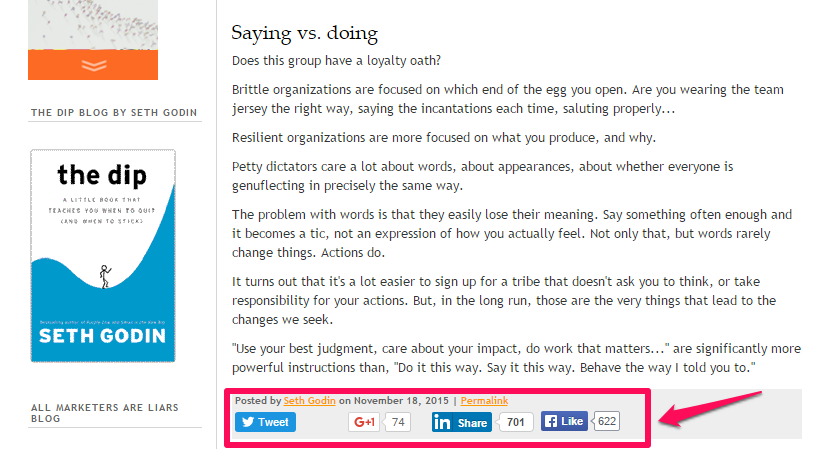
Remember that influence isn’t the same as popularity. They’re not interchangeable, though a lot of people regard them as such.
Brian Solis reports that one person responding to a survey he conducted with Vocus put it like this:
Popularity is just that people like you, influence is when they listen to you.
When you’re selling online, becoming popular shouldn’t be your ultimate focus. Spend time building your influence. It takes time, but it’s worth the effort.
In the book Influence: The Psychology of Persuasion, author Robert B. Cialdini, Ph.D., identifies the 6 factors that get people’s brain function to do something that they wouldn’t have ordinarily done.

In my experience as a content marketer who’s built a loyal audience, influence can be achieved through consistently creating useful content for your target audience and forming relationships with influencers and readers.
If you’re a blogger, you’ve already cleared the first hurdle of building authority and influencing people. Macallan persuaded 32 people to do marketing for the company. This resulted in a huge increase in exposure and influence over an audience of 150,000 people.

Next, give adequate time to content creation and building friendships. Reply to comments, answer questions, and, every so often, visit a reader’s blog and give them some free feedback or tips on how to improve their site.
Public speaking is another way to establish your personal brand and build a loyal following.
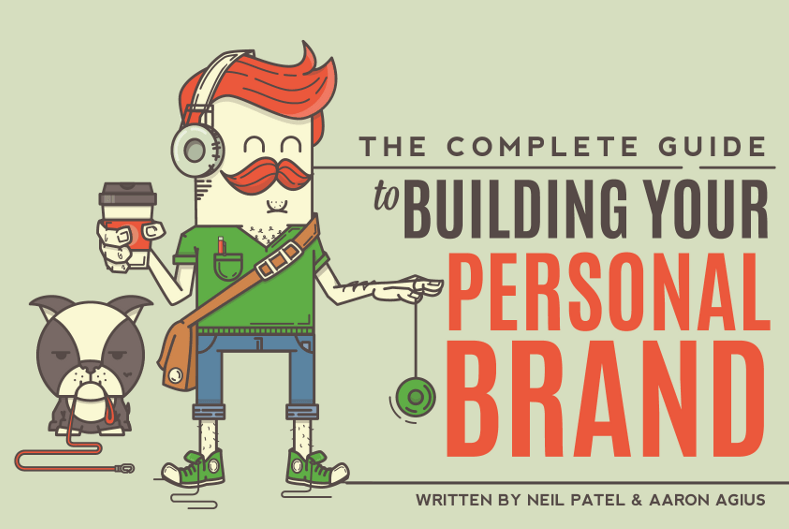
2. You Have to Sell Yourself Before You Can Sell Your Product
Make no mistake: You’re a product; and like any product, you have to successfully communicate the value of that product. Until that happens, you’ll find it difficult to sell your actual products or services.
Before anybody is going to buy from you or your company, they’ve got to ‘buy’ the idea that you’re somebody worth working with. In other words, just like a job candidate, your first task is always selling yourself.
Email marketing is the most effective lead generation tactic, followed by websites/landing pages and then content marketing. But guess what? Each of these tactics will work better when you first sell yourself, then the product.

Selling yourself isn’t an insurmountable challenge. There are lots of opportunities in today’s world of marketing to appeal to the human brain. However, with many opportunities come an increase in competition.

In a sea of writers, bloggers, freelancers, consultants, public speakers, etc., how do you stand out from the crowd?
It’s simple: Become passionate about your product.
When you’re selling yourself, you’re not concerned about the money. Your responsibility is to educate others’ human minds as you convey your brand’s core message.
HelpScout doesn’t just try to sell help-desk software. Instead, it also sells itself as a brand.
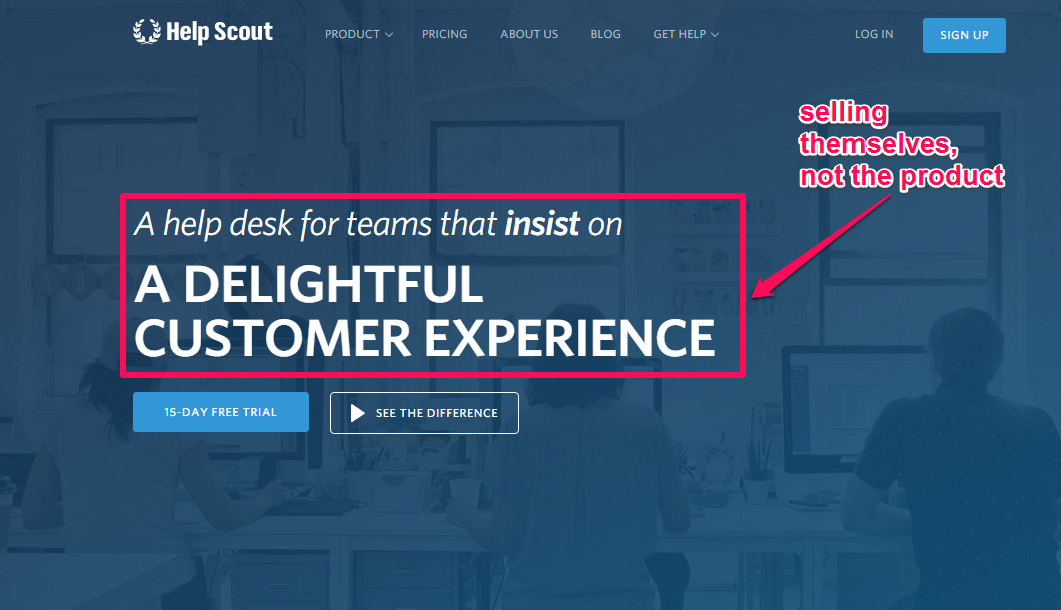
Learning how to sell yourself first is critical to your success. No matter what product you’re offering for sale, do your best to connect with and communicate your core brand values to your prospects.

3. Build Interest with Features; Build Desire with Benefits
Sell the benefits, not the features.
Most people and companies think products and services sell because of their great features. That’s not the case.
Harvard Business School conducted a research study and found that products of all kinds sell because of their benefits. The benefits that drive sales aren’t always obvious from the customer’s perspective though.
Whether you’re selling via email, direct mail, or social selling, highlight the benefits as well as the features of your product.
Starting with the strongest benefits of your product will reassure customers that you care about them, not (just) their hard-earned money, providing social security.
Selling with benefits means that you’re transparent with your customers. That’s exactly what their cognitive function wants.
Copywriters know how to sell benefits.
For example, Dan Kennedy wrote sales copy that generated over $10 million in sales over the years. It’s the same with Eben Pagan, Frank Kern and several top digital entrepreneurs.
These people were successful because they focused on benefits, not features. Successful selling boils down to one thing: showing your customers how your offer/product meets their needs.
Kat Night agrees that quantifying the benefits of a product is more likely to result in a sale than describing its features.
However, in order to avoid misleading prospects and customers, you have to start by building interest with features. Then, you increase their desire for your product with benefits.
When people are searching for a solution to meet their needs, what their brain function is actually looking for is a future that appeals to them. According to BufferApp, “people don’t buy products, they buy better versions of themselves.”
Consumers are happy to spend money on products that’ll make their lives better. Before the iPod was invented, there were MP3 players on the market. So iPod sold the benefit: “1,000 songs in your pocket.”
What’s the difference between a benefit and a feature?
This is how the folks at User Onboard explain:

In a nutshell, benefits are what you (or your prospects) can do with a product. Features are what the product can do. They sound similar, right? Yet, they’re totally different things.
“You can get fit without straining your joints with an elliptical trainer” targets the benefit. “Easy-glide motion, timer, and adjustable intensity settings” are all features.
See the difference?
Customers’ cognitive functions are different depending on where they are in the buying journey. Their human brains all must first recognize a need, then seek potential solutions, evaluate the solutions, decide to take action, and finally make the purchase.

Use features at stages 1 and 2; benefits will work better on their brain activity when they’re actually making purchase decisions (stages 4 and 5).
Professor Albert Wenben from the University of Wisconsin-Madison conducted a study on the topic of “Consumer Values, Product Benefits and Customer Value: A Consumption Behavior Approach.”
He found that “from the customers’ perspectives, products are viewed as a bundle of benefits, not attributes” (features).
MBA Skool suggests that a product benefit is usually the answer to customer’s questions. You probably already know that questions are driven by the psychological phenomenon of an emotional desire to know more.
The level of satisfaction derived from a product will differ depending on human behavior and cognitive neuroscience. After all, two people may both need a product, but one can need it desperately, while the other could get along without it.
To get the best results, highlight 70% of your product’s benefits, and 30% of the features.

Let’s look at an example in the world of marketing consulting services and products.
For most retailers with optimized and high-functioning websites, SEO and email marketing are more beneficial than a Facebook page. That’s not always true for other retailers.
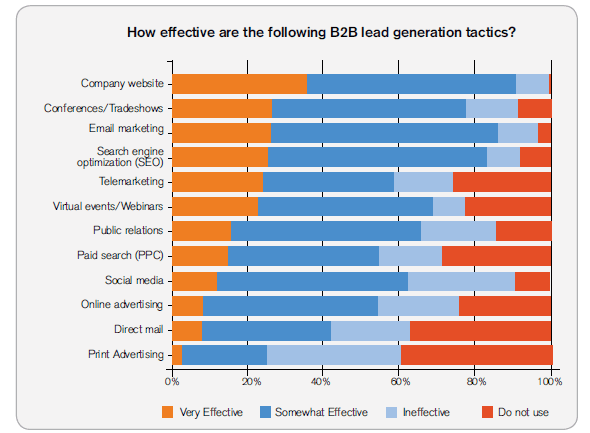
If you help businesses set up a Facebook marketing campaign (including a fan page), you need to sell with benefits while targeting your ideal customers (e.g., those without a functional website or with low-performing sites).
People buy products emotionally, and justify the purchases logically. When you use brain science to build interest with features and create strong desire with benefits, you’re meeting your prospects where they are and giving them the social security and social proof they need to feel confident in the purchase.
When you evoke the appropriate emotions, customers may not even know why they’re responding to your product. But they’ll buy it.
Remember that benefits are the things that you can do with a product, while features are what the product can do. Let’s look at a few real-world examples:
Twitter is a unique micro-blogging platform. It helps you update your timeline in real-time. It all began from their value proposition, based on the platform’s benefits: “start a conversation, explore your interests and be in the know.”
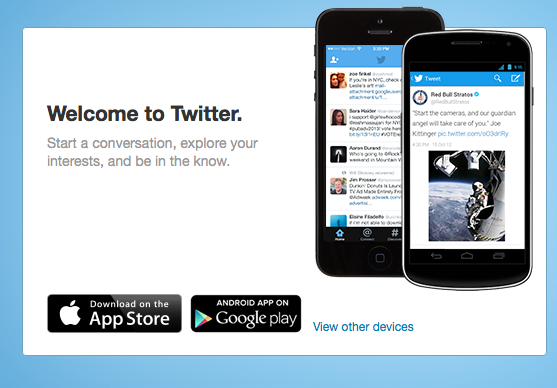
Volusion.com has a unique value proposition that simply and strongly projects the core benefit of its software.
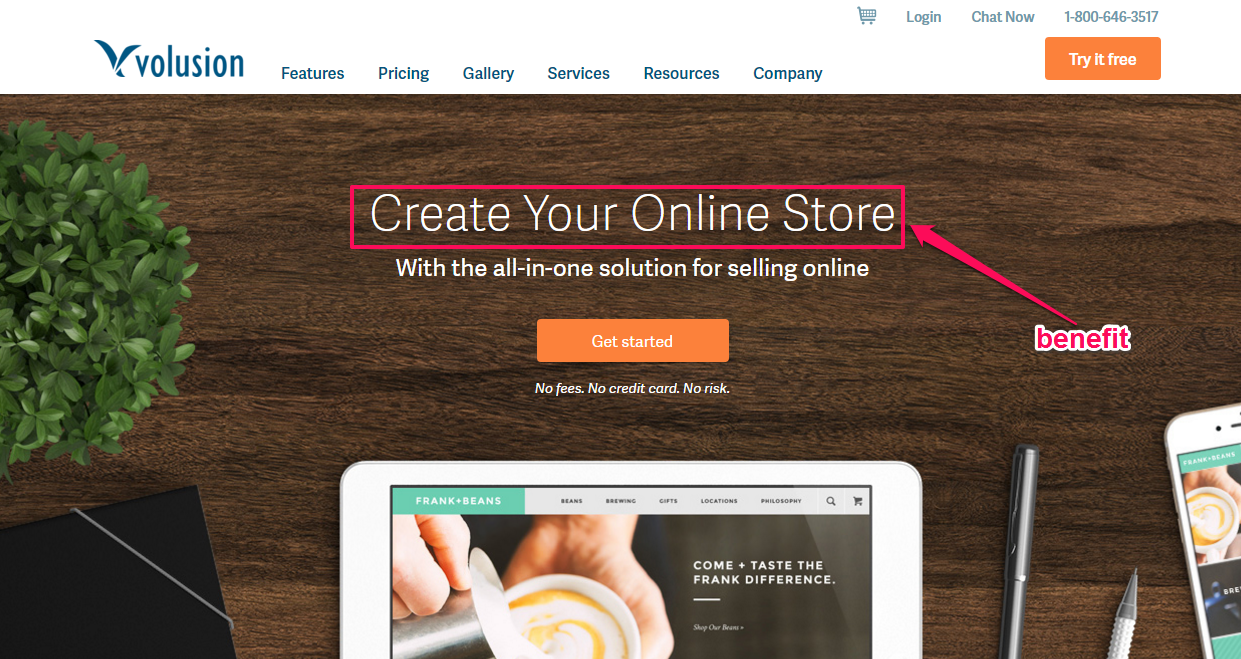
It’s your responsibility to study your product and know its features, benefits and advantage over your competitor’s product.
4. Sell the Results by Painting a Clear Picture
Are you selling your product’s results?
If you don’t do that consistently, you’ll likely struggle to acquire qualified leads and increase conversion and revenue.
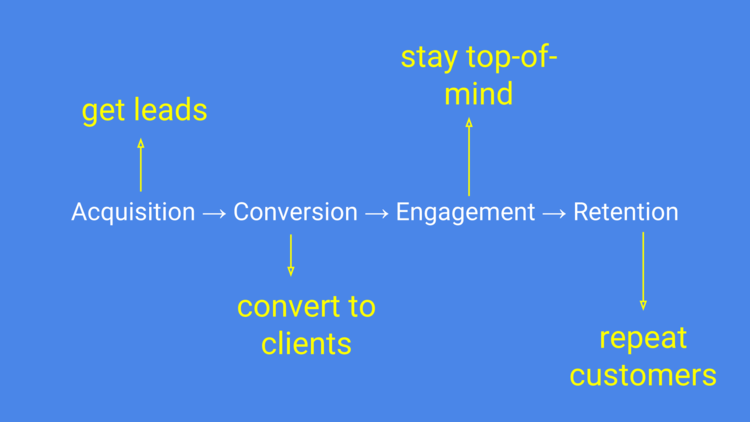
These days, most of us are selling to a new generation of customers: the millennials.
Millennials are a unique set of people born between 1982 and 2000 and making up 26% of the world’s population. Over 23% of millennials hold a bachelor’s degree or higher, making them the most educated generation in history.
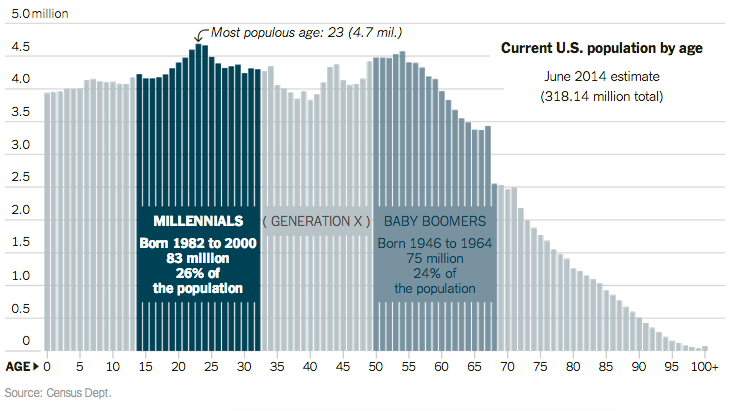
Even if today’s consumers haven’t graduated college, they do know what they’re after in a product. They want results and they won’t let their human brain function be swayed by fancy copy that doesn’t give at least a sneak peek of the results that they can expect.
To market successfully to this group of consumers, you need solid research and data.
A study conducted by Harvey Research on “How to Sell with Ad Readership Studies” found that “one of the primary reasons for conducting an ad readership study is to obtain research which will help your organization sell advertising.”
When this research is documented and the data shared with advertisers, it becomes a marketing partner.
In advertising, the result is the data — that is, the actionable metrics. If your product helped a customer increase lead generation by 27%, that’s a metric that you can use to win more clients.
Have you ever wondered how introverts successfully sell products? An introvert is a person whose motives, actions, social preferences and human brain functions are directed inwards. Introverts generally don’t enjoy the human behavior associated with convincing or negotiating.
They’re reserved. Selling is not their preferred task, yet many of them end up becoming top salespeople and industry power players.
Brian Tracy was an introvert, but by studying consumer psychology and cognitive science and learning what social signals prompt people to buy, he’s become exceptionally successful through neuroscience principles of sales.
One of the sales secrets that the introvert masters know is that it’s much better to sell the results of a product, instead of the product itself.
Selling the result can be likened to painting a clear picture of your target in an ideal future setting — a point in time where they’ve conquered their challenge or solved their problem successfully — and displaying it on a shelf.
People who know that person will be captivated by the promise of the painting.
In the same vein, when you paint the picture of your product’s results and show people how easily they can use it, you’ll build interest and inspire action in them.
According to Tara Gentle,
People aren’t looking for your service (or your product, or your program). They’re looking for results.
In other words, your product isn’t the selling point, so why make it the focus? For example, instead of writing your copy headlines using your product name, focus on the product’s results.
A few ways to sell results instead of products are:
Lead with the value of the product, not the title: If your product helps people cut 5 hours off their workweek, lead with that. It’s your competitive advantage.
If your offer (e.g., service, program, online course, etc.) helps people lose 10 pounds in 60 days, let your copy focus on that core benefit.
Derek Halpern sells the result of his online course, “Yes Engines.” See the captivating title?:
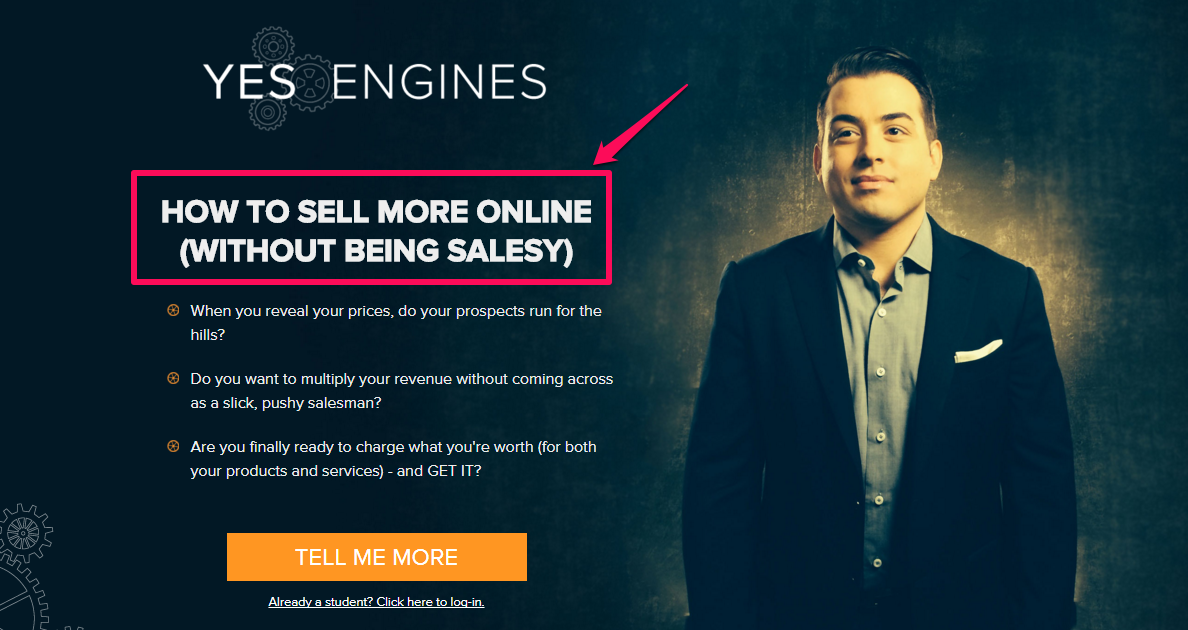
Showcase before and after results: Fitness trainers know how to use “before” and “after” pictures and videos to improve self-esteem, inspire action, and improve positive cognitive function.
If you’re looking to lose weight, would you be excited when you see amazing case study results from people like you and then find out you can do the same?
The same thing applies to makeup products or tutorials. If you’ve been searching for a makeup training program and you came across the before & after pictures below, would you want to know more?

In selling the results of a product, rather than the product itself, you’ve got to use visuals that allow your customers to see themselves getting the results they want. Don’t just describe what the end result will look like; represent it with visuals.
Even scientists are in sales. How do scientists sell brain science, cellular neuroscience or experimental psychology to the public? The public isn’t naturally interested in subjects such as developmental neurobiology, computational neuroscience, functional magnetic resonance imaging, or neural systems.
Also, difficult and upsetting subjects such as Alzheimer’s disease, brain damage, post-traumatic stress disorder, or other mental health issues can be difficult to sell to a reader.
Are there any typical results they have to show, the way a blogger who created an online course on how to “get 1000 email subscribers” would?
More than likely, the scientists don’t have visual results to show. Instead, they sell the validity of a case study and its importance to appeal to the reader’s cognitive psychology.
A study by Vanderbilt University concluded that scientists sell scientific data and ideas by convincing their peers and colleagues of the study’s validity and importance.
Since the population usually can’t fully understand all of the wide range of implications of scientific data, a scientist’s “pitch” is often translated by the news media into something that a lay audience can understand.
In many niches, before you can sell a product you need to first acquire leads, nurture them, and convince them to buy.
Selling isn’t a one-way street. Several factors play a vital role. The platforms where you generate your leads matter. Most people have generated more leads through Facebook ads than Google Ads.
On the other hand, the quality of leads of Google Ads tends to be higher.
When it comes to giving people value for their time and money, Google leads the pack. Google sells advertising, not search results.
That is why paid ads in Google are clearly marked and set apart from the actual search results. When it comes to displaying the right results, here’s what Google says:
Google search results take into account who links to a web page as well as how relevant the content on that page is to your search. Our results reflect what the online community believes is important, not what we or our partners think you ought to see.
As you can see, Google sells advertising on its search engine, but it delivers the most relevant, valuable, and helpful search results in its organic listings. Site owners can neither pay to stay at the top of the search results pages, nor manipulate their rankings (at least, not for long).
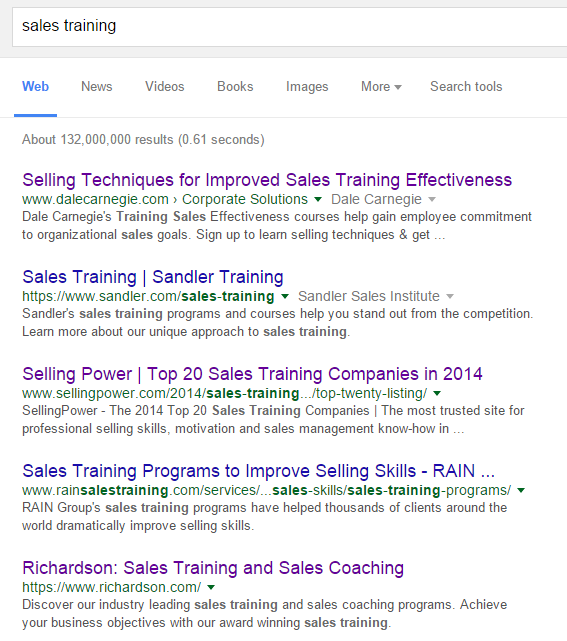
Google is the leading digital advertising company because first, it understands what people want, and second, it’s committed to providing the best search results.
5. Credibility Depends on Trust and Expertise
You are more likely to make sales when you have built credibility.
You can build credibility in a number of ways, including by providing top-notch customer service.
Customers want to reach an agent who can help them resolve problems quickly. They also want to interact with real people and gain access to information to resolve issue themselves.
Trust + expertise = credibility.
You can’t succeed in business if you lack credibility. Top brands can boast about their products, because over the years they’ve become known and are credible, offering social security.
That’s why it’s difficult for a new marketer, organization, or company to dominate the marketplace.
Customers’ cognitive functions are scared to trust you or your product. After all, you might take their money and vanish. Customer service is the hallmark of credibility. It builds credibility from the ground up.
The viral effect of bad customer service is alarming. More people share negative experiences than they share good ones. 66% of customers who experienced negative (bad) customer experience want to discourage others from buying from that company.
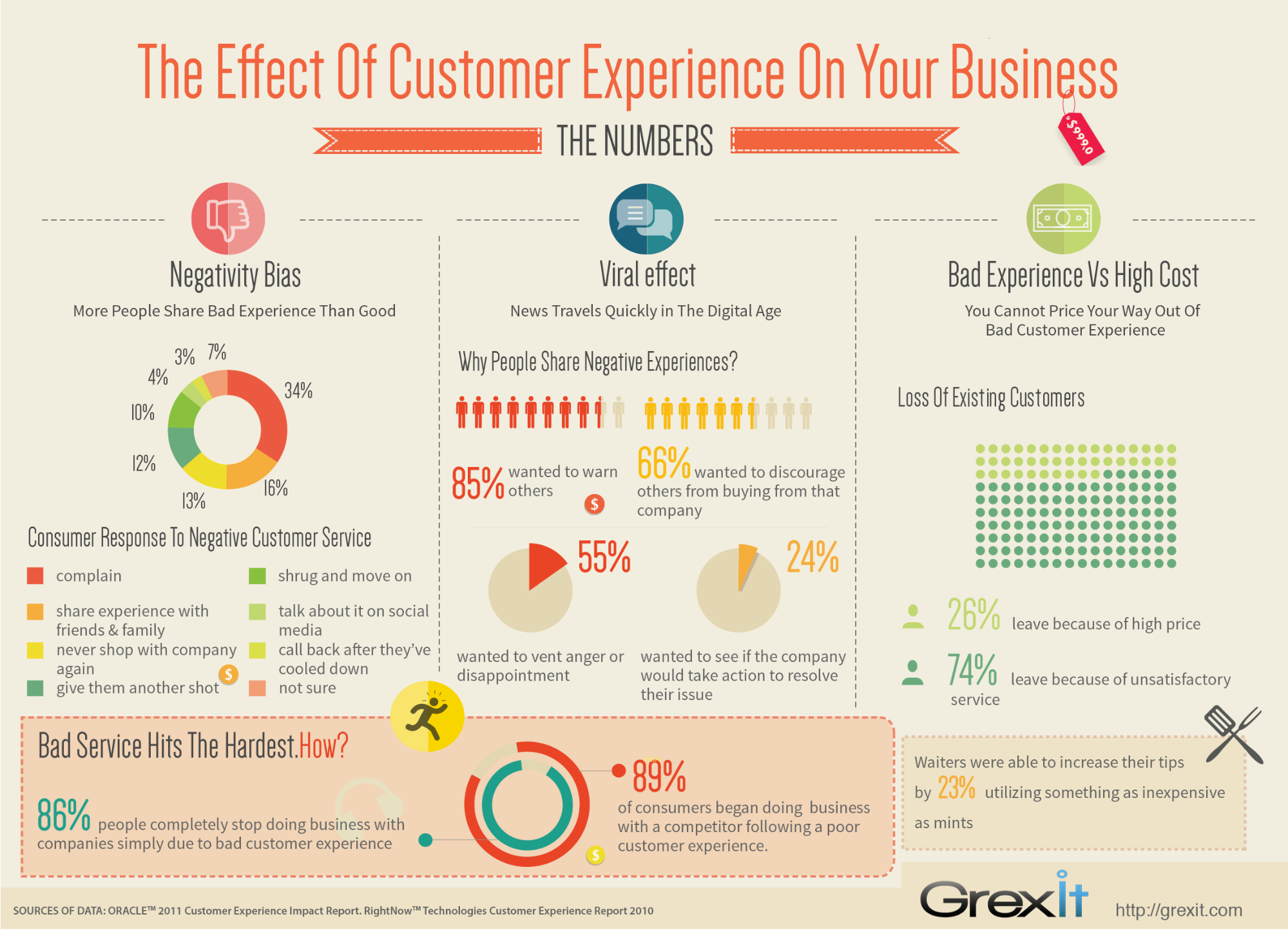
86% of people completely stopped doing business with companies over bad customer experiences. It negatively affects their human brain functions.
Every day, I wake up and ask myself a question: “What’s the best thing I can do for my customers today?”
It’s a simple, slightly dramatic exercise that reinforces for me the importance of building trust in prospect’s minds. People won’t trust you unless you’ve proven yourself and delivered immense value over a period of time.
How do you establish credibility when you’re an online business owner?
Stanford Web Credibility Research compiled 10 guidelines for building the credibility of a website. This can be applied to your product, personality, and brand.
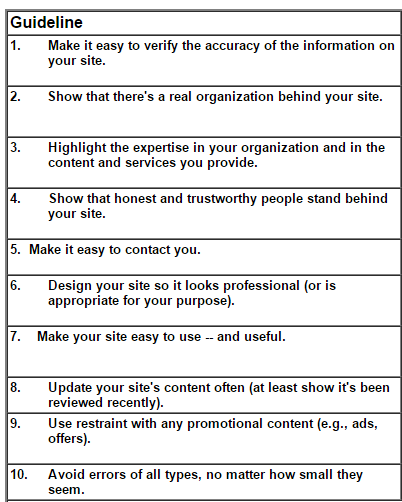
Most local businesses know how to build credibility. They use sentiment to affect human behavior. While others are struggling to earn a customer’s trust, local businesses donate to schools, sponsor children’s sports teams and participate in community events bulletin boards.
Be willing to work hard. People respect people who work hard. But, don’t make it all about yourself. Credibility is best earned by looking out for the interests of other people.
Here are a few simple ways to improve your credibility:
Answer questions correctly: Trust and transparency are just as important to corporate reputation as the quality of products and services. If you give incorrect answers it will damage your reputation.
When people ask you questions, if you don’t know the right answer, then say so. Offer to do some research and get back to them.
Whatever you do, don’t spout off with something you’re not sure of just to sound intelligent. The more you answer questions correctly, the more people will trust you.
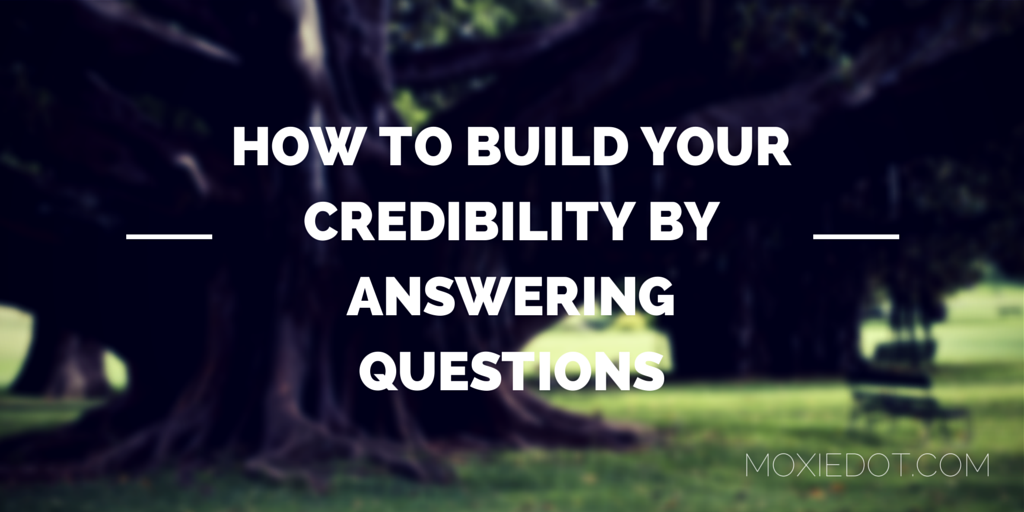
Produce valuable content regularly: There is no shortcut to content creation. You either do it yourself or outsource it to a knowledgeable freelance writer.
Always publish new content that helps people achieve their goals more easily. Your credibility level will increase.
Don’t just create generic content. Instead, focus on creating custom content that will be relevant to your audience and in sync with your goal.
Offer to solve relevant problems: If you have unique skills, you can offer to solve relevant problems for your target audience.
For example, if you’re a website developer, you could offer to help readers tweak their WordPress themes, or show them how to do it easily themselves.
Build relationships: We all need to treat others fairly, recognize their inherent worth, and respect them.
Don’t let your human behavior be solely consumed by the amount of money you can make. Instead, now and again, help people for free. Brenton Hayden recommends that you follow a few specific strategies if you want to up your credibility:
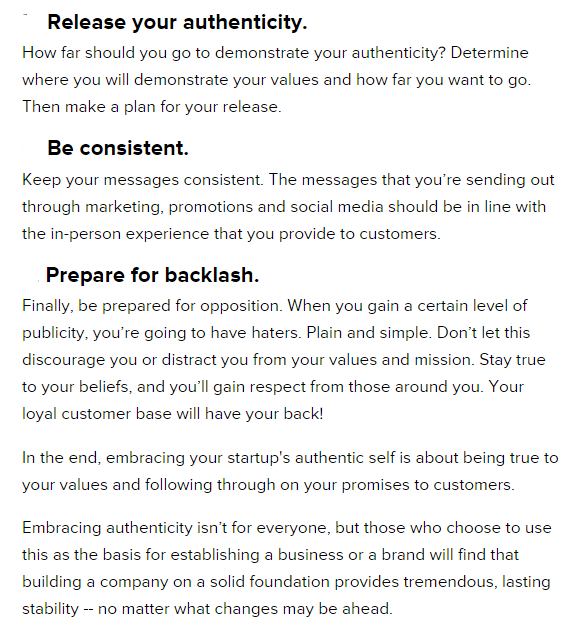
In today’s marketplace, brands and products disappear as quickly as they appear. Most of them won’t stand the test of time.
It’s obvious that the way to improve your credibility is to build relationships with prospects and customers and earn their trust.
You can also build credibility by showcasing customer success stories. If you don’t have any authority at all, it may be hard for people to trust you. The best approach to appeal to their cognitive functions is to show that your product really works.
Drew Manning, founder of Fit2Fat2Fit, knows how to showcase real-life results. He discovered that most people who sell fitness programs and products are athletic, fit people who have never been overweight.
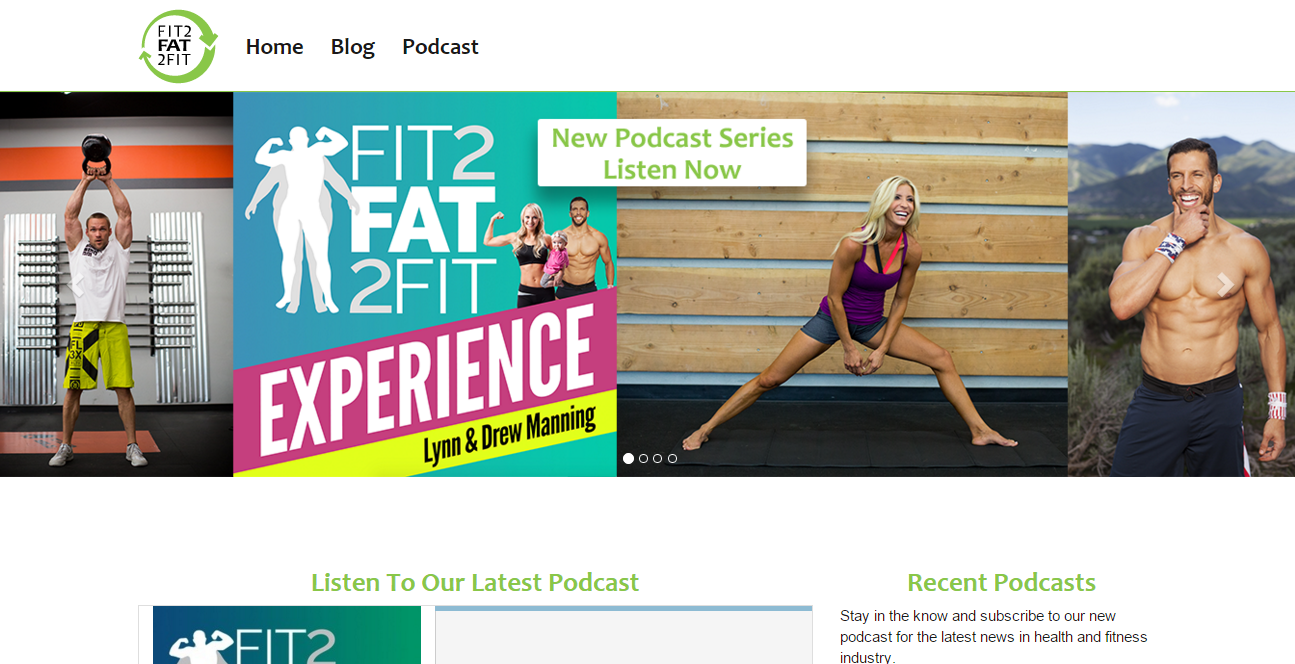
How can they possibly understand the human brain functions behind the struggles that overweight people endure and what that feels like?
Drew Manning did things differently. He spent 6 months gaining over 70 lbs. He then spent another 6 months taking the weight off.
This transformation was a source of confidence to potential customers. They thought, “If it worked for him, it’ll work for me, too.”

6. Sales Is a “Give and Give” Relationship
Giving usually comes into focus during the holiday season.

In The Science of Giving: Experimental Approaches To The Study of Charity, author Daniel M. Oppenheimer estimated that Americans donate over $300 billion each year to charity.
When you’re selling a product online or offline, giving should be in the form of value.
For example, you could give 1 – 10 GB free to customers who register your cloud storage solution, as pCloud does.
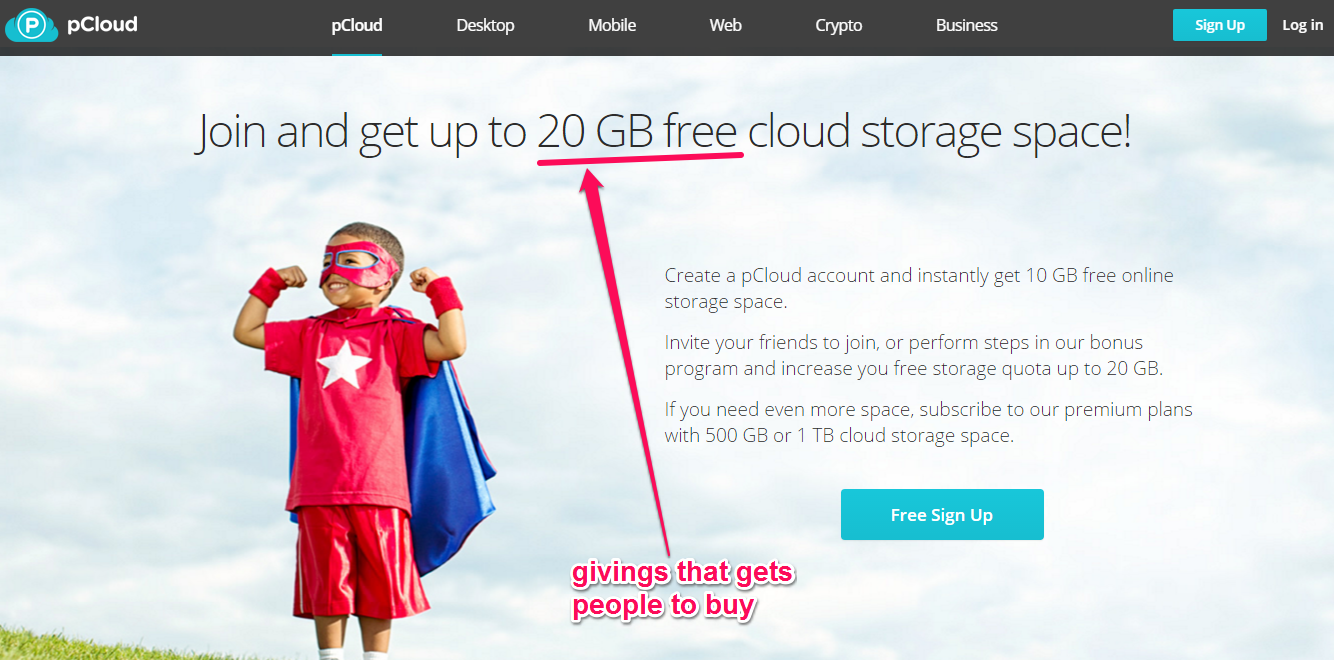
If you’re an author, you could give away the first two chapters of your book for free.
Giving is what I do on a daily basis because it’s the only way to build a sales relationship with potential customers.
I spent $30,000 on content creation; and instead of selling it, I gave the content away for free.
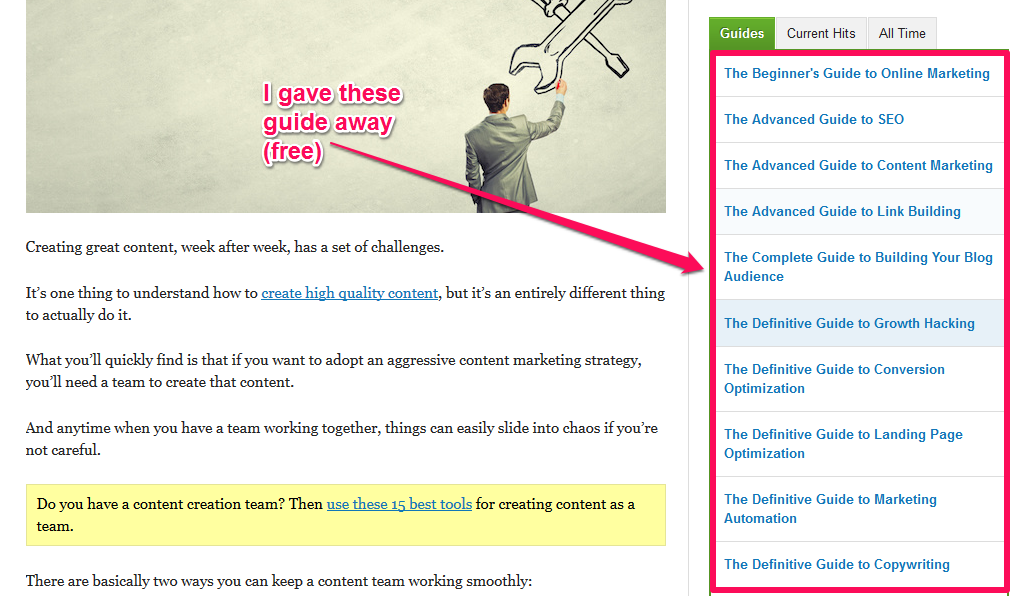
Your customers are your best salespeople. Before they can recommend your product to other prospects, you need to make up your mind to give and give. That’s the relationship between you and customers.
According to the Agricultural Marketing Resource Center, there is a way to sell that is rewarding, positive, and even enjoyable. It’s called relationship marketing and it’s a message Dale Carnegie started delivering over 80 years ago.
When you first establish a relationship with prospects, it affect their neural development and becomes easier to sell to them. The best salespeople are the best givers.
Contrary to what most people think, it’s not a “give and take” relationship, because you’re not taking anything from your audience.
If you love your customers (of course you should), then look for ways to give them as much value as possible and let it be more than what they’ll pay for.
Even though they may buy your product, that doesn’t mean you’re taking from them. The value of your product/service is expected to be higher than the price they paid for it.
Don’t get tired of giving. It’s your life as an entrepreneur, whether you run a brick-and-mortar business or are an online marketer.
Creating relationships that drive sales is critical to your business. That’s how top brands like Amazon, Zappos, Home Depot, and the like thrive in this competitive age.
The existing brain science research in psychology, economics, and neuroscience exploring the benefits of charitable giving has been largely correlational. Does it cause more happiness and fulfillment? Or is the connection between happiness and giving just a happy accident?
Happiness is a positive form of emotion, the province, and function of the limbic brain region.
To sell more products, give more value for free. According to Dunn and Norton, a study on happiness shows that the most satisfying way to use money is to invest in others. This might explain why so many people donate to charities that work in developing countries.
You can learn from two of America’s leading billionaires: Bill Gates and Warren Buffett. Buffett donated 99% of his wealth to help charitable causes, saying “I couldn’t be happier with that decision.”

Both billionaires give quite a bit to the world. Yet, here they willingly moved themselves down from being billionaires to millionaires. Heartfelt giving brings more into your life and your business.
Successful internet marketers who generated 6 or 7 figure incomes when they launched their products online followed this strategy.
They first started by giving tremendous value, well before selling. Eben Pagan, Frank Kern, Jeff Goins, Bill Baren and others launched their products in this manner.
For example, before Brian Dean opened his premium course “SEO That Works,” he first taught the best way to get top rankings for free in a blog post. I’m subscribed to his email list, so I can tell you that the value he provided made purchasing his online course a very simple decision. because he had already created tons of value for me.
If you don’t have a product to sell at the moment, it shouldn’t stop you from giving a richer experience to your prospects. Create high-quality content consistently.
I’ve been blogging for over a decade. Since that time, I’ve been creating 3 – 5 in-depth, relevant and valuable pieces of content for my audience each week.
That’s why you see huge traffic spikes in my blogs and a growing customer base for my software businesses.
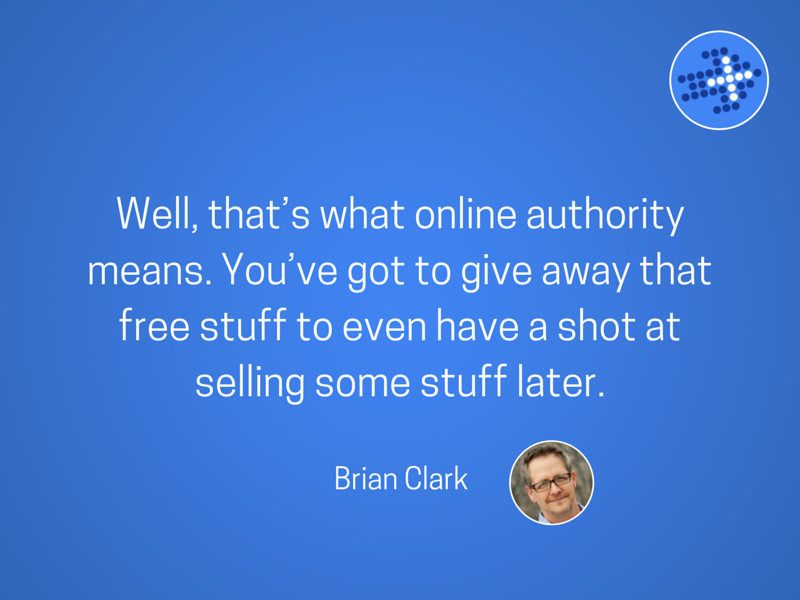
New studies prove that giving is beneficial not just for the recipients, but for the givers’ health and happiness. Giving promotes cooperation, positive human behavior, and social connection.
This is what you need to boost sales.
A study by sociologists Brent Simpson and Robb Willer showed that “when you give to others, your generosity is likely to be rewarded by others down the line—sometimes by the person you gave to, sometimes by someone else.”
7. To Close More Sales, Stop Selling
Brian Dean, the founder of Backlinko and SEO That Works, understands how to persuade people to sign up for his online course.
Even though his online course is closed, he still sells by requesting that you join the waiting list.
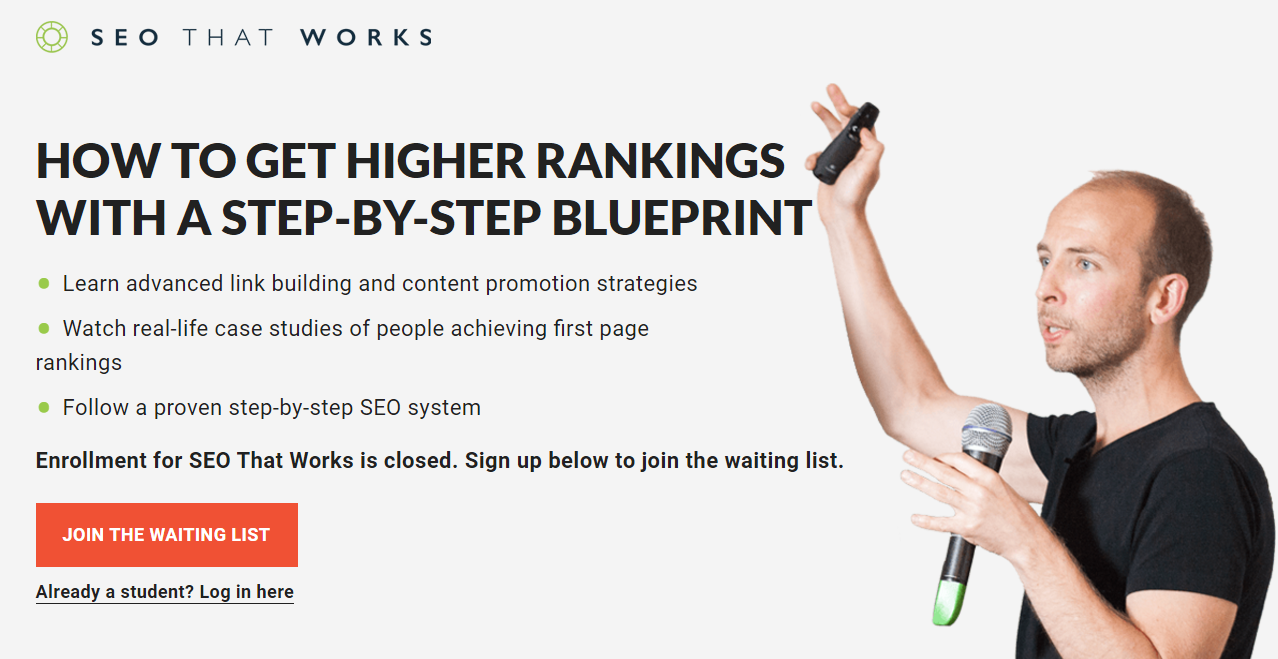
Why does he do this?
Well, when people join his waiting list, they get quality advice and case studies of people achieving first page rankings, etc. By the time the course re-opens again, subscribers who joined the waiting list will be desperate for the online course.
The majority of them will eagerly enroll. After all, they’ve already received tremendous value, free of charge.
In other words, stop pushing your products to the target audience. Instead, push high-value content. Answer questions and show the results of your services or products.
One company that sells its products quite successfully without sounding too salesy is BlendTec. BlendTec took a novel approach way back in 2007 with its “Will It Blend?” series.
The founder, Tom Dickson, understands that what people are looking for in a blender is the blade’s sharpness and the motor’s strength.
In each video in the “Will It Blend?” series, Tom tests his blender by blending anything from cell phones to wooden rakes.
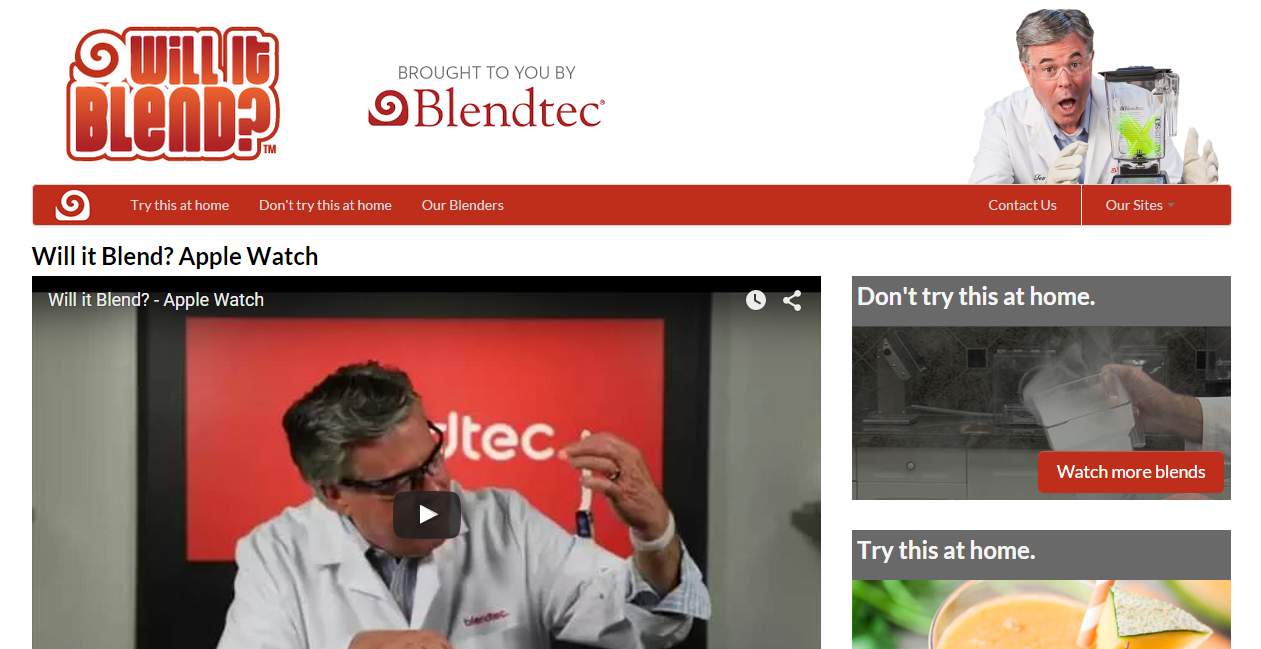
Don’t try to push sales too much. Instead, educate more. Become a teacher. Become passionate about helping other people.
Brian Clark, the founder of Copyblogger, discovered early in his content marketing business that “Teaching Sells.”
When he started teaching instead of selling, he turned his blog into a multi-million dollar software business. He also went on to start another new business called RainMaker.fm.
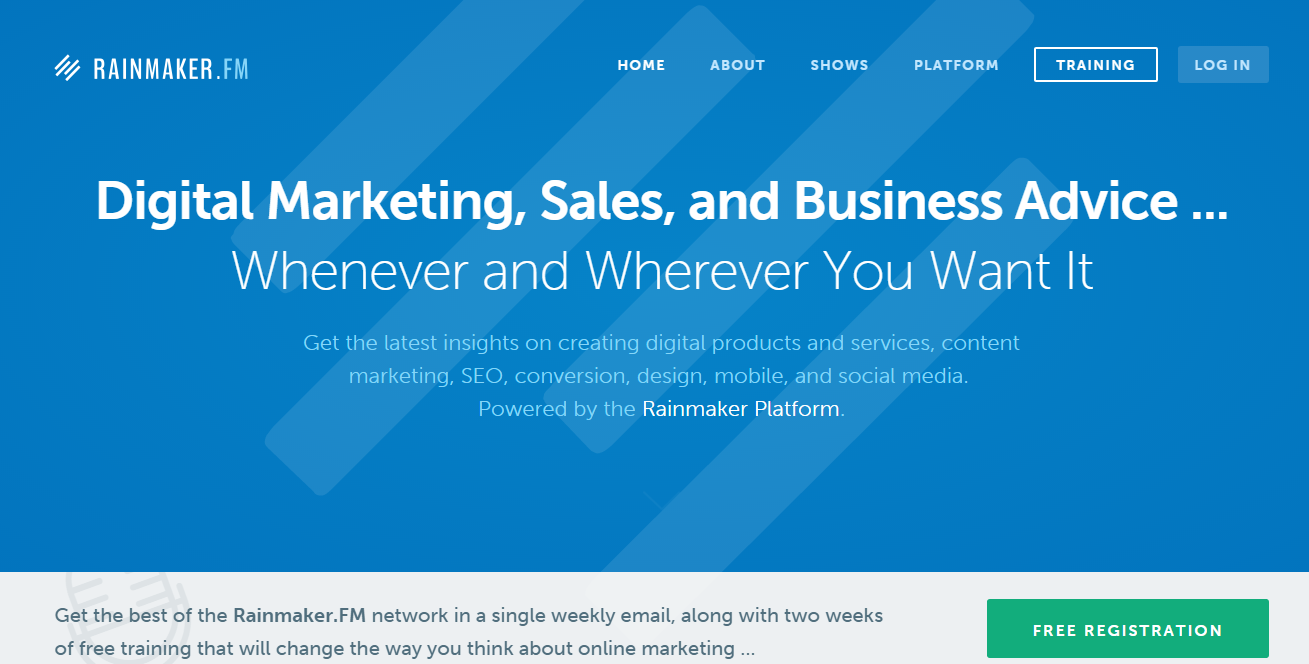
When you teach, you’re giving away value that people can’t find elsewhere. If you continually educate and inform your target audience, you’ll sell more products or services in the process.
Conclusion
If you can tap into how your customer’s brains works at different stages in the purchasing process or lead funnel, you may be able to drive more sales with less effort.
The neuroscience sales tips we’ve provided should help you get started thinking about how you can leverage the power of the human brain in your own digital marketing strategy.
If all of this sounds intimidating and you want help enacting these principles, let us know. Our team of experts are ready and waiting to partner with you to create a stellar SEO or marketing plan that drives sales by considering how your customers think.
Which of these cognitive neuroscience principles have you applied to increase your product sales online?
See How My Agency Can Drive Massive Amounts of Traffic to Your Website
- SEO – unlock massive amounts of SEO traffic. See real results.
- Content Marketing – our team creates epic content that will get shared, get links, and attract traffic.
- Paid Media – effective paid strategies with clear ROI.
MARKETING
How to Use AI For a More Effective Social Media Strategy, According to Ross Simmonds

Welcome to Creator Columns, where we bring expert HubSpot Creator voices to the Blogs that inspire and help you grow better.
It’s the age of AI, and our job as marketers is to keep up.
My team at Foundation Marketing recently conducted an AI Marketing study surveying hundreds of marketers, and more than 84% of all leaders, managers, SEO experts, and specialists confirmed that they used AI in the workplace.

If you can overlook the fear-inducing headlines, this technology is making social media marketers more efficient and effective than ever. Translation: AI is good news for social media marketers.
In fact, I predict that the marketers not using AI in their workplace will be using it before the end of this year, and that number will move closer and closer to 100%.
Social media and AI are two of the most revolutionizing technologies of the last few decades. Social media has changed the way we live, and AI is changing the way we work.
So, I’m going to condense and share the data, research, tools, and strategies that the Foundation Marketing Team and I have been working on over the last year to help you better wield the collective power of AI and social media.
Let’s jump into it.
What’s the role of AI in social marketing strategy?
In a recent episode of my podcast, Create Like The Greats, we dove into some fascinating findings about the impact of AI on marketers and social media professionals. Take a listen here:
Let’s dive a bit deeper into the benefits of this technology:
Benefits of AI in Social Media Strategy
AI is to social media what a conductor is to an orchestra — it brings everything together with precision and purpose. The applications of AI in a social media strategy are vast, but the virtuosos are few who can wield its potential to its fullest.
AI to Conduct Customer Research
Imagine you’re a modern-day Indiana Jones, not dodging boulders or battling snakes, but rather navigating the vast, wild terrain of consumer preferences, trends, and feedback.
This is where AI thrives.
Using social media data, from posts on X to comments and shares, AI can take this information and turn it into insights surrounding your business and industry. Let’s say for example you’re a business that has 2,000 customer reviews on Google, Yelp, or a software review site like Capterra.
Leveraging AI you can now have all 2,000 of these customer reviews analyzed and summarized into an insightful report in a matter of minutes. You simply need to download all of them into a doc and then upload them to your favorite Generative Pre-trained Transformer (GPT) to get the insights and data you need.
But that’s not all.
You can become a Prompt Engineer and write ChatGPT asking it to help you better understand your audience. For example, if you’re trying to come up with a persona for people who enjoy marathons but also love kombucha you could write a prompt like this to ChatGPT:

The response that ChatGPT provided back is quite good:

Below this it went even deeper by including a lot of valuable customer research data:
- Demographics
- Psychographics
- Consumer behaviors
- Needs and preferences
And best of all…
It also included marketing recommendations.
The power of AI is unbelievable.
Social Media Content Using AI
AI’s helping hand can be unburdening for the creative spirit.
Instead of marketers having to come up with new copy every single month for posts, AI Social Caption generators are making it easier than ever to craft catchy status updates in the matter of seconds.
Tools like HubSpot make it as easy as clicking a button and telling the AI tool what you’re looking to create a post about:

The best part of these AI tools is that they’re not limited to one channel.
Your AI social media content assistant can help you with LinkedIn content, X content, Facebook content, and even the captions that support your post on Instagram.
It can also help you navigate hashtags:

With AI social media tools that generate content ideas or even write posts, it’s not about robots replacing humans. It’s about making sure that the human creators on your team are focused on what really matters — adding that irreplaceable human touch.
Enhanced Personalization
You know that feeling when a brand gets you, like, really gets you?
AI makes that possible through targeted content that’s tailored with a level of personalization you’d think was fortune-telling if the data didn’t paint a starker, more rational picture.
What do I mean?
Brands can engage more quickly with AI than ever before. In the early 2000s, a lot of brands spent millions of dollars to create social media listening rooms where they would hire social media managers to find and engage with any conversation happening online.
Thanks to AI, brands now have the ability to do this at scale with much fewer people all while still delivering quality engagement with the recipient.
Analytics and Insights
Tapping into AI to dissect the data gives you a CSI-like precision to figure out what works, what doesn’t, and what makes your audience tick. It’s the difference between guessing and knowing.
The best part about AI is that it can give you almost any expert at your fingertips.
If you run a report surrounding the results of your social media content strategy directly from a site like LinkedIn, AI can review the top posts you’ve shared and give you clear feedback on what type of content is performing, why you should create more of it, and what days of the week your content is performing best.
This type of insight that would typically take hours to understand.
Now …
Thanks to the power of AI you can upload a spreadsheet filled with rows and columns of data just to be met with a handful of valuable insights a few minutes later.
Improved Customer Service
Want 24/7 support for your customers?
It’s now possible without human touch.
Chatbots powered by AI are taking the lead on direct messaging experiences for brands on Facebook and other Meta properties to offer round-the-clock assistance.
The fact that AI can be trained on past customer queries and data to inform future queries and problems is a powerful development for social media managers.
Advertising on Social Media with AI
The majority of ad networks have used some variation of AI to manage their bidding system for years. Now, thanks to AI and its ability to be incorporated in more tools, brands are now able to use AI to create better and more interesting ad campaigns than ever before.
Brands can use AI to create images using tools like Midjourney and DALL-E in seconds.
Brands can use AI to create better copy for their social media ads.
Brands can use AI tools to support their bidding strategies.
The power of AI and social media is continuing to evolve daily and it’s not exclusively found in the organic side of the coin. Paid media on social media is being shaken up due to AI just the same.
How to Implement AI into Your Social Media Strategy
Ready to hit “Go” on your AI-powered social media revolution?
Don’t just start the engine and hope for the best. Remember the importance of building a strategy first. In this video, you can learn some of the most important factors ranging from (but not limited to) SMART goals and leveraging influencers in your day-to-day work:
The following seven steps are crucial to building a social media strategy:
- Identify Your AI and Social Media Goals
- Validate Your AI-Related Assumptions
- Conduct Persona and Audience Research
- Select the Right Social Channels
- Identify Key Metrics and KPIs
- Choose the Right AI Tools
- Evaluate and Refine Your Social Media and AI Strategy
Keep reading, roll up your sleeves, and follow this roadmap:
1. Identify Your AI and Social Media Goals
If you’re just dipping your toes into the AI sea, start by defining clear objectives.
Is it to boost engagement? Streamline your content creation? Or simply understand your audience better? It’s important that you spend time understanding what you want to achieve.
For example, say you’re a content marketing agency like Foundation and you’re trying to increase your presence on LinkedIn. The specificity of this goal will help you understand the initiatives you want to achieve and determine which AI tools could help you make that happen.
Are there AI tools that will help you create content more efficiently? Are there AI tools that will help you optimize LinkedIn Ads? Are there AI tools that can help with content repurposing? All of these things are possible and having a goal clearly identified will help maximize the impact. Learn more in this Foundation Marketing piece on incorporating AI into your content workflow.
Once you have identified your goals, it’s time to get your team on board and assess what tools are available in the market.
Recommended Resources:
2. Validate Your AI-Related Assumptions
Assumptions are dangerous — especially when it comes to implementing new tech.
Don’t assume AI is going to fix all your problems.
Instead, start with small experiments and track their progress carefully.
3. Conduct Persona and Audience Research
Social media isn’t something that you can just jump into.
You need to understand your audience and ideal customers. AI can help with this, but you’ll need to be familiar with best practices. If you need a primer, this will help:
Once you understand the basics, consider ways in which AI can augment your approach.
4. Select the Right Social Channels
Not every social media channel is the same.
It’s important that you understand what channel is right for you and embrace it.
The way you use AI for X is going to be different from the way you use AI for LinkedIn. On X, you might use AI to help you develop a long-form thread that is filled with facts and figures. On LinkedIn however, you might use AI to repurpose a blog post and turn it into a carousel PDF. The content that works on X and that AI can facilitate creating is different from the content that you can create and use on LinkedIn.
The audiences are different.
The content formats are different.
So operate and create a plan accordingly.
Recommended Tools and Resources:
5. Identify Key Metrics and KPIs
What metrics are you trying to influence the most?
Spend time understanding the social media metrics that matter to your business and make sure that they’re prioritized as you think about the ways in which you use AI.
These are a few that matter most:
- Reach: Post reach signifies the count of unique users who viewed your post. How much of your content truly makes its way to users’ feeds?
- Clicks: This refers to the number of clicks on your content or account. Monitoring clicks per campaign is crucial for grasping what sparks curiosity or motivates people to make a purchase.
- Engagement: The total social interactions divided by the number of impressions. This metric reveals how effectively your audience perceives you and their readiness to engage.
Of course, it’s going to depend greatly on your business.
But with this information, you can ensure that your AI social media strategy is rooted in goals.
6. Choose the Right AI Tools
The AI landscape is filled with trash and treasure.
Pick AI tools that are most likely to align with your needs and your level of tech-savviness.
For example, if you’re a blogger creating content about pizza recipes, you can use HubSpot’s AI social caption generator to write the message on your behalf:

The benefit of an AI tool like HubSpot and the caption generator is that what at one point took 30-40 minutes to come up with — you can now have it at your fingertips in seconds. The HubSpot AI caption generator is trained on tons of data around social media content and makes it easy for you to get inspiration or final drafts on what can be used to create great content.
Consider your budget, the learning curve, and what kind of support the tool offers.
7. Evaluate and Refine Your Social Media and AI Strategy
AI isn’t a magic wand; it’s a set of complex tools and technology.
You need to be willing to pivot as things come to fruition.
If you notice that a certain activity is falling flat, consider how AI can support that process.
Did you notice that your engagement isn’t where you want it to be? Consider using an AI tool to assist with crafting more engaging social media posts.
Make AI Work for You — Now and in the Future
AI has the power to revolutionize your social media strategy in ways you may have never thought possible. With its ability to conduct customer research, create personalized content, and so much more, thinking about the future of social media is fascinating.
We’re going through one of the most interesting times in history.
Stay equipped to ride the way of AI and ensure that you’re embracing the best practices outlined in this piece to get the most out of the technology.
MARKETING
Advertising in local markets: A playbook for success

Many brands, such as those in the home services industry or a local grocery chain, market to specific locations, cities or regions. There are also national brands that want to expand in specific local markets.
Regardless of the company or purpose, advertising on a local scale has different tactics than on a national scale. Brands need to connect their messaging directly with the specific communities they serve and media to their target demo. Here’s a playbook to help your company succeed when marketing on a local scale.
1. Understand local vs. national campaigns
Local advertising differs from national campaigns in several ways:
- Audience specificity: By zooming in on precise geographic areas, brands can tailor messaging to align with local communities’ customs, preferences and nuances. This precision targeting ensures that your message resonates with the right target audience.
- Budget friendliness: Local advertising is often more accessible for small businesses. Local campaign costs are lower, enabling brands to invest strategically within targeted locales. This budget-friendly nature does not diminish the need for strategic planning; instead, it emphasizes allocating resources wisely to maximize returns. As a result, testing budgets can be allocated across multiple markets to maximize learnings for further market expansion.
- Channel selection: Selecting the correct channels is vital for effective local advertising. Local newspapers, radio stations, digital platforms and community events each offer advantages. The key lies in understanding where your target audience spends time and focusing efforts to ensure optimal engagement.
- Flexibility and agility: Local campaigns can be adjusted more swiftly in response to market feedback or changes, allowing brands to stay relevant and responsive.
Maintaining brand consistency across local touchpoints reinforces brand identity and builds a strong, recognizable brand across markets.
2. Leverage customized audience segmentation
Customized audience segmentation is the process of dividing a market into distinct groups based on specific demographic criteria. This marketing segmentation supports the development of targeted messaging and media plans for local markets.
For example, a coffee chain might cater to two distinct segments: young professionals and retirees. After identifying these segments, the chain can craft messages, offers and media strategies relating to each group’s preferences and lifestyle.
To reach young professionals in downtown areas, the chain might focus on convenience, quality coffee and a vibrant atmosphere that is conducive to work and socializing. Targeted advertising on Facebook, Instagram or Connected TV, along with digital signage near office complexes, could capture the attention of this demographic, emphasizing quick service and premium blends.
Conversely, for retirees in residential areas, the chain could highlight a cozy ambiance, friendly service and promotions such as senior discounts. Advertisements in local print publications, community newsletters, radio stations and events like senior coffee mornings would foster a sense of community and belonging.
Dig deeper: Niche advertising: 7 actionable tactics for targeted marketing
3. Adapt to local market dynamics
Various factors influence local market dynamics. Brands that navigate changes effectively maintain a strong audience connection and stay ahead in the market. Here’s how consumer sentiment and behavior may evolve within a local market and the corresponding adjustments brands can make.
- Cultural shifts, such as changes in demographics or societal norms, can alter consumer preferences within a local community. For example, a neighborhood experiencing gentrification may see demand rise for specific products or services.
- Respond by updating your messaging to reflect the evolving cultural landscape, ensuring it resonates with the new demographic profile.
- Economic conditions are crucial. For example, during downturns, consumers often prioritize value and practicality.
- Highlight affordable options or emphasize the practical benefits of your offerings to ensure messaging aligns with consumers’ financial priorities. The impact is unique to each market and the marketing message must also be dynamic.
- Seasonal trends impact consumer behavior.
- Align your promotions and creative content with changing seasons or local events to make your offerings timely and relevant.
- New competitors. The competitive landscape demands vigilance because new entrants or innovative competitor campaigns can shift consumer preferences.
- Differentiate by focusing on your unique selling propositions, such as quality, customer service or community involvement, to retain consumer interest and loyalty.
4. Apply data and predictive analytics
Data and predictive analytics are indispensable tools for successfully reaching local target markets. These technologies provide consumer behavior insights, enabling you to anticipate market trends and adjust strategies proactively.
- Price optimization: By analyzing consumer demand, competitor pricing and market conditions, data analytics enables you to set prices that attract customers while ensuring profitability.
- Competitor analysis: Through analysis, brands can understand their positioning within the local market landscape and identify opportunities and threats. Predictive analytics offer foresight into competitors’ potential moves, allowing you to strategize effectively to maintain a competitive edge.
- Consumer behavior: Forecasting consumer behavior allows your brand to tailor offerings and marketing messages to meet evolving consumer needs and enhance engagement.
- Marketing effectiveness: Analytics track the success of advertising campaigns, providing insights into which strategies drive conversions and sales. This feedback loop enables continuous optimization of marketing efforts for maximum impact.
- Inventory management: In supply chain management, data analytics predict demand fluctuations, ensuring inventory levels align with market needs. This efficiency prevents stockouts or excess inventory, optimizing operational costs and meeting consumer expectations.
Dig deeper: Why you should add predictive modeling to your marketing mix
5. Counter external market influences
Consider a clothing retailer preparing for a spring collection launch. By analyzing historical weather data and using predictive analytics, the brand forecasts an unseasonably cool start to spring. Anticipating this, the retailer adjusts its campaign to highlight transitional pieces suitable for cooler weather, ensuring relevance despite an unexpected chill.
Simultaneously, predictive models signal an upcoming spike in local media advertising rates due to increased market demand. Retailers respond by reallocating a portion of advertising budgets to digital channels, which offer more flexibility and lower costs than traditional media. This shift enables brands to maintain visibility and engagement without exceeding budget, mitigating the impact of external forces on advertising.
6. Build consumer confidence with messaging
Localized messaging and tailored customer service enhance consumer confidence by demonstrating your brand’s understanding of the community. For instance, a grocery store that curates cooking classes featuring local cuisine or sponsors community events shows commitment to local culture and consumer interests.
Similarly, a bookstore highlighting local authors or topics relevant to the community resonates with local customers. Additionally, providing service that addresses local needs — such as bilingual service and local event support — reinforces the brand’s values and response to the community.
Through these localized approaches, brands can build trust and loyalty, bridging the gap between corporate presence and local relevance.
7. Dominate with local advertising
To dominate local markets, brands must:
- Harness hyper-targeted segmentation and geo-targeted advertising to reach and engage precise audiences.
- Create localized content that reflects community values, engage in community events, optimize campaigns for mobile and track results.
- Fine-tune strategies, outperform competitors and foster lasting relationships with customers.
These strategies will enable your message to resonate with local consumers, differentiate you in competitive markets and ensure you become a major player in your specific area.
Dig deeper: The 5 critical elements for local marketing success
Opinions expressed in this article are those of the guest author and not necessarily MarTech. Staff authors are listed here.
MARKETING
Battling for Attention in the 2024 Election Year Media Frenzy


As we march closer to the 2024 U.S. presidential election, CMOs and marketing leaders need to prepare for a significant shift in the digital advertising landscape. Election years have always posed unique challenges for advertisers, but the growing dominance of digital media has made the impact more profound than ever before.
In this article, we’ll explore the key factors that will shape the advertising environment in the coming months and provide actionable insights to help you navigate these turbulent waters.
The Digital Battleground
The rise of cord-cutting and the shift towards digital media consumption have fundamentally altered the advertising landscape in recent years. As traditional TV viewership declines, political campaigns have had to adapt their strategies to reach voters where they are spending their time: on digital platforms.


According to a recent report by eMarketer, the number of cord-cutters in the U.S. is expected to reach 65.1 million by the end of 2023, representing a 6.9% increase from 2022. This trend is projected to continue, with the number of cord-cutters reaching 72.2 million by 2025.
Moreover, a survey conducted by Pew Research Center in 2023 found that 62% of U.S. adults do not have a cable or satellite TV subscription, up from 61% in 2022 and 50% in 2019. This data further underscores the accelerating shift away from traditional TV and towards streaming and digital media platforms.
As these trends continue, political advertisers will have no choice but to follow their audiences to digital channels. In the 2022 midterm elections, digital ad spending by political campaigns reached $1.2 billion, a 50% increase from the 2018 midterms. With the 2024 presidential election on the horizon, this figure is expected to grow exponentially, as campaigns compete for the attention of an increasingly digital-first electorate.
For brands and advertisers, this means that the competition for digital ad space will be fiercer than ever before. As political ad spending continues to migrate to platforms like Meta, YouTube, and connected TV, the cost of advertising will likely surge, making it more challenging for non-political advertisers to reach their target audiences.
To navigate this complex and constantly evolving landscape, CMOs and their teams will need to be proactive, data-driven, and willing to experiment with new strategies and channels. By staying ahead of the curve and adapting to the changing media consumption habits of their audiences, brands can position themselves for success in the face of the electoral advertising onslaught.
Rising Costs and Limited Inventory
As political advertisers flood the digital market, the cost of advertising is expected to skyrocket. CPMs (cost per thousand impressions) will likely experience a steady climb throughout the year, with significant spikes anticipated in May, as college students come home from school and become more engaged in political conversations, and around major campaign events like presidential debates.


For media buyers and their teams, this means that the tried-and-true strategies of years past may no longer be sufficient. Brands will need to be nimble, adaptable, and willing to explore new tactics to stay ahead of the game.
Black Friday and Cyber Monday: A Perfect Storm
The challenges of election year advertising will be particularly acute during the critical holiday shopping season. Black Friday and Cyber Monday, which have historically been goldmines for advertisers, will be more expensive and competitive than ever in 2024, as they coincide with the final weeks of the presidential campaign.
To avoid being drowned out by the political noise, brands will need to start planning their holiday campaigns earlier than usual. Building up audiences and crafting compelling creative assets well in advance will be essential to success, as will a willingness to explore alternative channels and tactics. Relying on cold audiences come Q4 will lead to exceptionally high costs that may be detrimental to many businesses.
Navigating the Chaos
While the challenges of election year advertising can seem daunting, there are steps that media buyers and their teams can take to mitigate the impact and even thrive in this environment. Here are a few key strategies to keep in mind:
Start early and plan for contingencies: Begin planning your Q3 and Q4 campaigns as early as possible, with a focus on building up your target audiences and developing a robust library of creative assets.
Be sure to build in contingency budgets to account for potential cost increases, and be prepared to pivot your strategy as the landscape evolves.


Embrace alternative channels: Consider diversifying your media mix to include channels that may be less impacted by political ad spending, such as influencer marketing, podcast advertising, or sponsored content. Investing in owned media channels, like email marketing and mobile apps, can also provide a direct line to your customers without the need to compete for ad space.
Owned channels will be more important than ever. Use cheaper months leading up to the election to build your email lists and existing customer base so that your BF/CM can leverage your owned channels and warm audiences.
Craft compelling, shareable content: In a crowded and noisy advertising environment, creating content that resonates with your target audience will be more important than ever. Focus on developing authentic, engaging content that aligns with your brand values and speaks directly to your customers’ needs and desires.
By tapping into the power of emotional triggers and social proof, you can create content that not only cuts through the clutter but also inspires organic sharing and amplification.
Reflections
The 2024 election year will undoubtedly bring new challenges and complexities to the world of digital advertising. But by staying informed, adaptable, and strategic in your approach, you can navigate this landscape successfully and even find new opportunities for growth and engagement.
As a media buyer or agnecy, your role in steering your brand through these uncharted waters will be critical. By starting your planning early, embracing alternative channels and tactics, and focusing on creating authentic, resonant content, you can not only survive but thrive in the face of election year disruptions.
So while the road ahead may be uncertain, one thing is clear: the brands that approach this challenge with creativity, agility, and a steadfast commitment to their customers will be the ones that emerge stronger on the other side.
-

 PPC7 days ago
PPC7 days ago4 New Google Ads Performance Max Updates: What You Need to Know
-

 PPC4 days ago
PPC4 days ago19 Best SEO Tools in 2024 (For Every Use Case)
-
SEARCHENGINES6 days ago
Daily Search Forum Recap: April 16, 2024
-

 SEO6 days ago
SEO6 days agoGoogle Clarifies Vacation Rental Structured Data
-

 MARKETING6 days ago
MARKETING6 days agoWill Google Buy HubSpot? | Content Marketing Institute
-

 PPC7 days ago
PPC7 days agoShare Of Voice: Why Is It Important?
-

 PPC6 days ago
PPC6 days agoHow to Collect & Use Customer Data the Right (& Ethical) Way
-

 MARKETING5 days ago
MARKETING5 days agoStreamlining Processes for Increased Efficiency and Results


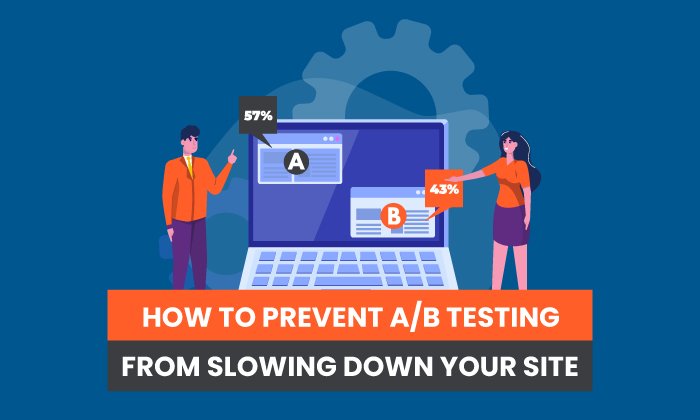





![How to Use AI For a More Effective Social Media Strategy, According to Ross Simmonds Download Now: The 2024 State of Social Media Trends [Free Report]](https://articles.entireweb.com/wp-content/uploads/2024/04/How-to-Use-AI-For-a-More-Effective-Social-Media.png)


